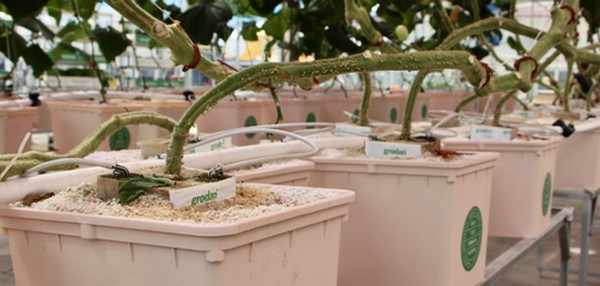Irrigation can be a complex topic. In order to get to understand this topic, we need to have good base knowledge. An irrigation system is a hydraulic system that moves water with the help of pumps, pipes, tubing, and more. Irrigation systems must be selected and sized based on the type and size of our system. There are three key aspects to understanding irrigation at a basic level: Capacity, uniformity, and control.
Capacity
Drip irrigation systems need to have enough capacity to meet the needs of water movement and nutrient delivery. Drip irrigation systems include the use of emitters to provide water and nutrients at the root zone level. Each emitter has a particular flow rate that is designed to deliver a specific amount of water. If the sum of all flow rates from emitters exceeds the capacity of the system, then emitters will not be able to deliver the same amount of water, reducing also nutrient delivery.

In order to have enough capacity, we already learned capacity must be calculated based on the flow of water that must be delivered. It is important to also consider that demands of water from plants can change depending on different factors and we should always prevent having enough capacity for a worst-case scenario. The demand for water can even be different inside of a greenhouse. This is why most growers prefer to install a pressure regulator in smaller circuits. Allowing to have better irrigation control.
Uniformity
One of the most important characteristics of irrigation in commercial production is uniformity. Why? Uniformity allows you to have control over different variables affecting production. Non-uniform systems can cause a delay on days to harvest or affect product quality. Uniformity can be affected by the type or design of our irrigation system. Another very important aspect to consider is substrates. Substrates can definitely have a strong effect on irrigation uniformity.
Drip irrigation systems target a good percentage of uniformity by using a high number of emitters with uniform discharge. Drip irrigation in comparison to other irrigation systems such as sprinklers can provide more uniformity.
Uniformity can be affected by the substrate. Some brands have worked really hard developing substrate options to improve uniformity. Grodan is one of these brands. Rockwool is an excellent option to provide water retention to our plants. This substrate is mostly used for germination and transplants. However, Grodan has also developed slabs that can be used in drip irrigation systems. These slabs are recognized by the excellent conditions provided at the root zone level, including of course uniformity to improve crop development.
Control
How can we decide when and for how much time to irrigate? Historically, the most commonly used method is to schedule irrigation. Other options include automation based on environmental conditions such as radiation.
When irrigating, growers need to think about two aspects: duration between irrigation events and the length of each irrigation event. Usually, intervals between irrigation events will change across the cycle depending on different factors such as stage of development and environmental conditions.
Irrigation needs can be crop-specific. Usually, growers adjust irrigation based on crop needs and, by trial and error. By running, trials growers can be completely sure the system is delivering the necessary amount of water and nutrients to each plant. In addition to water and nutrients required by the plant, growers commonly target to add 20% to 30% more water to “flush” the system and promote a more homogenous environment at the root zone level. This “excess” of water can compensate in a small percentage in case emitters are not providing uniform irrigation. Also can help us to avoid salt accumulation in substrates.
Hydroponics
Irrigation in hydroponics is a complex topic. Water and nutrient uptake from plants can change depending on environmental factors. Also, irrigation can also promote specific development in our crops.
For example, in tomatoes is known different temperatures at the root zone level can have an impact not only on water uptake but also the uptake of specific nutrients. Previous studies have shown that uptake of nutrients like Ca and P are more sensitive to changes in temperature than other nutrients (Adams, 1989).
Irrigation can also have an effect on promoting generative or vegetative growth. Generative growth is stimulated by a high difference between day and night temperature, use of low drainage percentage, and high electrical conductivity. On the other hand, vegetative growth is stimulated by low or no difference between day and night temperature, low electrical conductivity, and low drainage percentage.
Irrigation may appear simpler than what really is. In order to have real control over our crop, we should study deeply the irrigation requirements and the effects that can impact our crop.


